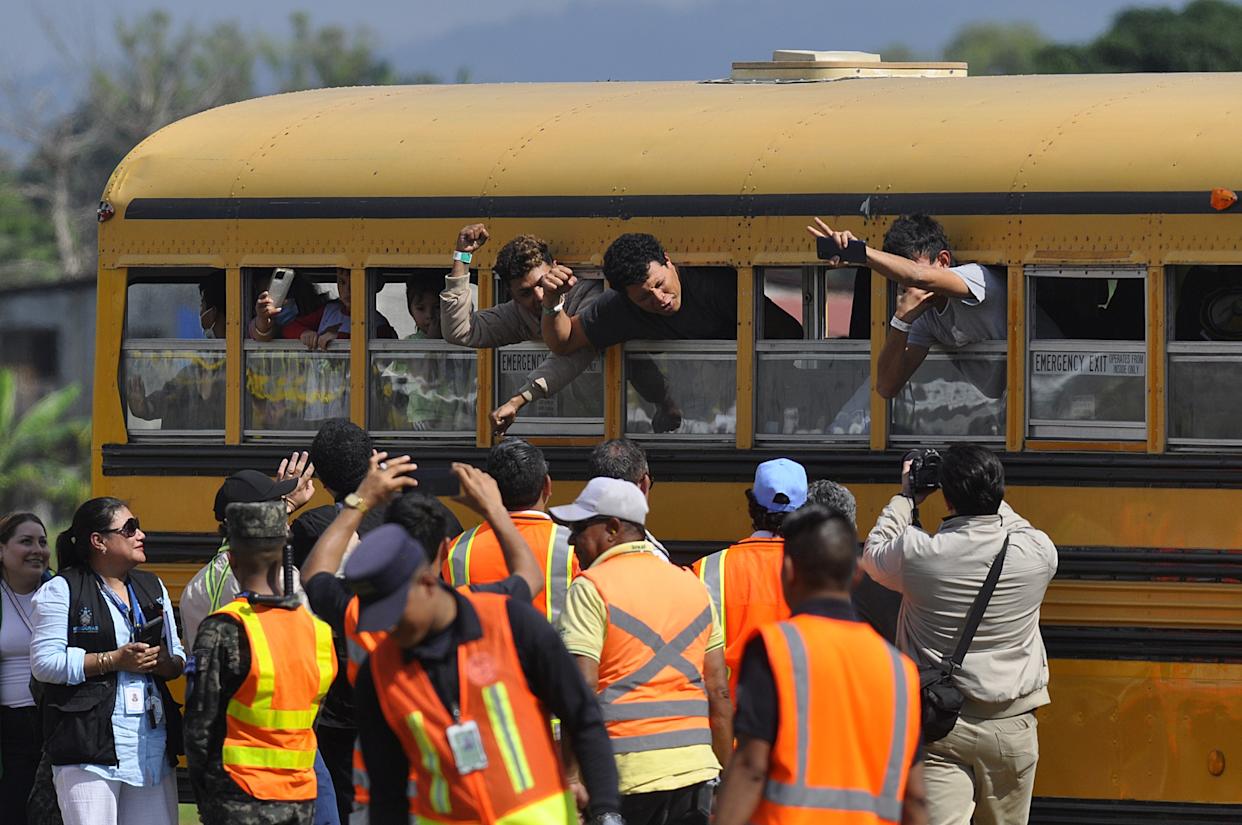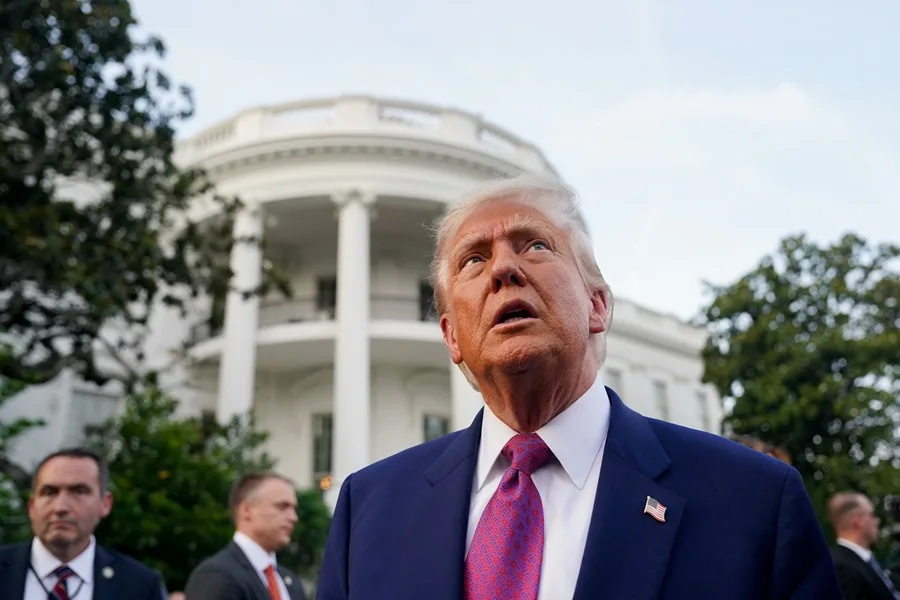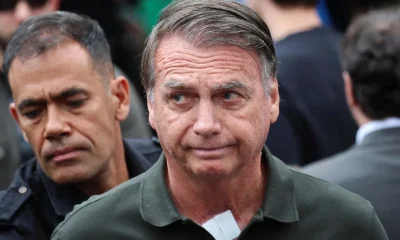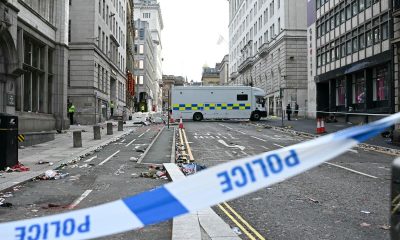International
16,000 evacuated from Kabul airport in past 24 hours: Pentagon

AFP
Around 16,000 people were evacuated over the past 24 hours from Afghanistan through the Kabul airport, the Pentagon said Monday, as the US speeds toward completing its airlift by an August 31 deadline.
General Hank Taylor told reporters that 61 military, commercial and charter flights involving a number of countries flew out from Hamid Karzai International Airport in the 24 hours to 3:00 am Monday (0700 GMT) carrying people escaping the country after the Taliban seized power.
Of the total evacuated that day, 11,000 were taken out by the US military airlift operations, Taylor said.
Taylor said the number of people relocated from Afghanistan since July on US flights hit 42,000, with 37,000 of those since the intense airlift operations started on August 14 as the Taliban moved to take Kabul.
That includes “several thousand” US citizens, and thousands of Afghans who worked for US forces, who had applied for or received special immigrant visas, and Afghans seen as at risk to Taliban attacks for their work in non-governmental organizations, the media, and other jobs, according to Pentagon spokesman John Kirby.
Kirby said focus remains on getting US evacuation operations done by the August 31 deadline set for the US pullout from the country by President Joe Biden.
That would require withdrawing the 5,800 US troops who have essentially run airport operations and maintained security since August 14, as well as large amounts of equipment brought in to support their mission.
German, British and French officials said Monday that evacuations on their part could continue after August 31, and said they want the US force to stay in place to help the international airlift.
On Tuesday leaders of the G7 group of wealthy nations will meet virtually on Afghanistan.
“Whether or not the US can be persuaded to stay is a matter for the prime minister (Boris Johnson) tomorrow in the G7 meeting,” British armed forces minister James Heappey told Sky News.
Britain currently chairs the G7, also comprising Canada, France, Germany, Italy, Japan and the United States.
Kirby did not categorically rule out Washington extending the deadline, although the Taliban have said they will hold the US to it.
For the United States, Kirby said, “The goal is to get as many people out as fast as possible.”
“The focus is on trying to do this as best we can, by the end of the month,” he said.
International
Meta Says Russia Seeks to Ban WhatsApp for Defending Secure Communication

U.S. tech giant Meta, the parent company of WhatsApp, said that Russia is seeking to ban the messaging app because it “challenges government attempts to violate people’s right to secure communication.”
Russian authorities have encouraged citizens to switch to state-backed applications, and in August they already blocked WhatsApp’s calling feature.
On Friday, the communications regulator Roskomnadzor claimed that the platform was being used to “organize and carry out terrorist acts in the country, recruit perpetrators, and facilitate fraud and other crimes.”
“If the messaging service does not comply with Russian law, it will be completely blocked,” the regulator warned.
WhatsApp remains one of Russia’s most widely used messaging services, alongside Telegram.
Moscow is pressuring both platforms to grant authorities access to user data upon request for investigations into fraud and activities the government labels as “terrorist.”
Human rights advocates fear the demand could be used to target critics of the Kremlin, President Vladimir Putin, or the war in Ukraine.
International
Archbishop Wenski criticizes Trump’s deportation policies, calls for stronger push for reform

The Archbishop of Miami, Thomas Wenski, has called for increased pressure on the U.S. Congress to advance comprehensive immigration reform and criticized President Donald Trump’s mass deportation policies, arguing that they “do nothing to help.”
“We need to apply more pressure on Congress so lawmakers can make the necessary changes. It is also important for the Administration to listen to our voice. We do not want to be anyone’s enemy—we are Americans,” Wenski said in an interview with EFE.
The religious leader, who heads one of the dioceses with the largest Latino and Haitian populations in the United States, issued a call to defend the rights of migrants. He also emphasized that the U.S. Conference of Catholic Bishops (USCCB) has maintained a strong and public stance in favor of migrants for decades.
International
Trump relaunches diplomatic push to finalize U.S.-Backed peace plan for Ukraine War

U.S. President Donald Trump announced on Tuesday that his diplomatic team will resume meetings with delegations from Russia and Ukraine in an effort to pressure both sides to accept the peace plan proposed by Washington to end the war in Ukraine.
As part of this new round of talks, U.S. Special Envoy Steve Witkoff will travel to Moscow to meet with Russian President Vladimir Putin. Meanwhile, Army Secretary Dan Driscoll will hold discussions with Ukrainian representatives to narrow differences on the remaining points of the agreement.
Trump also confirmed his intention to meet personally with Ukrainian President Volodymyr Zelensky and with Putin, though he emphasized that such meetings will only take place “when the agreement is fully finalized or in its final stage.”
The president claimed that his administration has made “tremendous progress” toward resolving the conflict and reiterated that the war “never would have started” if he had been in the White House at the onset of the crisis.
The U.S.-backed peace plan consists of 28 points and has been revised following feedback from both sides. According to Trump, only “a few points of disagreement” remain under active discussion.
One of the most controversial aspects of the proposal is the suggestion that Ukraine cede parts of the Donbas region to Russia and limit the size of its armed forces. Kyiv is working closely with Washington to soften these clauses in search of an arrangement that does not compromise its sovereignty or security.
With this diplomatic push, Trump aims to solidify his role as the main mediator in the conflict and steer the war toward a political resolution after years of devastation, humanitarian crisis, and rising global geopolitical tensions.
-

 International4 days ago
International4 days agoTrump relaunches diplomatic push to finalize U.S.-Backed peace plan for Ukraine War
-

 International4 days ago
International4 days agoBolsonaro misses appeal deadline, faces imminent prison order by Brazil’s Supreme Court
-

 International4 days ago
International4 days agoMan pleads not guilty in Liverpool parade incident that injured more than 130
-

 Central America2 days ago
Central America2 days agoPanama reinforces security with new helicopters and Super Tucano Aircraft purchases
-

 International4 days ago
International4 days agoMacron to announce new voluntary military service amid rising security concerns in Europe
-

 Central America2 days ago
Central America2 days agoTrump urges hondurans to back conservative candidate Nasry Asfura in november elections
-

 International2 days ago
International2 days agoArchbishop Wenski criticizes Trump’s deportation policies, calls for stronger push for reform
-

 Central America9 hours ago
Central America9 hours agoTrump Pardons Former Honduran President Hernández and Warns of Aid Cuts Ahead of Election
-

 Central America2 days ago
Central America2 days agoWashington calls for oversight as Honduras faces allegations of electoral interference
-

 International9 hours ago
International9 hours agoMeta Says Russia Seeks to Ban WhatsApp for Defending Secure Communication






























